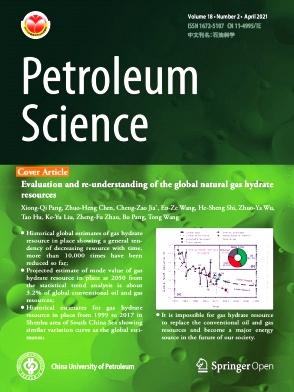Novel dual-enhanced stimulation for safe and efficient marine hydrate production
IF 6
1区 工程技术
Q2 ENERGY & FUELS
引用次数: 0
Abstract
The commercial exploitation of natural gas hydrates is currently facing several challenges, including low production rates, limited recovery areas, and brief periods of continuous production. To address these issues, we propose a novel dual-enhanced stimulation (DES) method for marine hydrate reservoirs. This method involves injecting a special slurry that solidifies into porous, high-permeability, and high-strength slurry veins. These veins not only enhance permeability, allowing for faster gas and water flow, but also improve reservoir stability. This study experimentally investigated the split grouting of clayey-silty sediments with dual-enhanced slurry to assess the feasibility of DES and to explore the slurry diffusion mechanism and micro-pore structure of the veins. The results showed that split grouting with dual-enhanced slurry exhibited frequent fracture initiation with quick pressure spikes and sharp declines, suggesting shorter fractures in clayey-silty sediments. As vertical stress increased, the primary diffusion direction of the dual-enhanced slurry shifted from horizontal to vertical, aligning with fracture propagation patterns observed during fracturing. Unlike hydraulic fracturing in hard rocks, split grouting in clayey-silty sediments encountered more difficult conditions. These veins formed through a recurring cycle of splitting into fractures and filling with slurry, occurring more frequently in weaker sediments with slower injection rates and higher vertical stress. Increased vertical stress hindered slurry vein diffusion, easily resulting in compaction grouting near the grouting pipe. Additionally, three-dimensional laser scanning of the veins showed that those formed through split grouting were continuous and stable, with their thickness decreasing as diffusion distance increased. The morphology of these veins was shaped by factors such as grouting rate, formation stress, and elastic modulus, with higher rates and elastic moduli facilitating the formation of complex vein networks. Mercury intrusion porosimetry demonstrated that the DES method resulted in veins with consistent effective porosity between 65% and 70% and median pore sizes of 11–15 μm across different locations. These veins formed a well-connected porous network of smaller pores, significantly enhancing both permeability and sand control. The research findings validate the effectiveness of the DES method for marine hydrate reservoirs, providing a strategy for the safe and efficient exploitation of NGH resources.
求助全文
约1分钟内获得全文
求助全文
来源期刊

Petroleum Science
地学-地球化学与地球物理
CiteScore
7.70
自引率
16.10%
发文量
311
审稿时长
63 days
期刊介绍:
Petroleum Science is the only English journal in China on petroleum science and technology that is intended for professionals engaged in petroleum science research and technical applications all over the world, as well as the managerial personnel of oil companies. It covers petroleum geology, petroleum geophysics, petroleum engineering, petrochemistry & chemical engineering, petroleum mechanics, and economic management. It aims to introduce the latest results in oil industry research in China, promote cooperation in petroleum science research between China and the rest of the world, and build a bridge for scientific communication between China and the world.
 求助内容:
求助内容: 应助结果提醒方式:
应助结果提醒方式:


